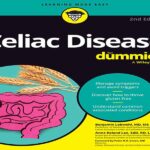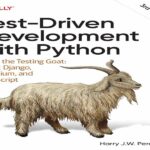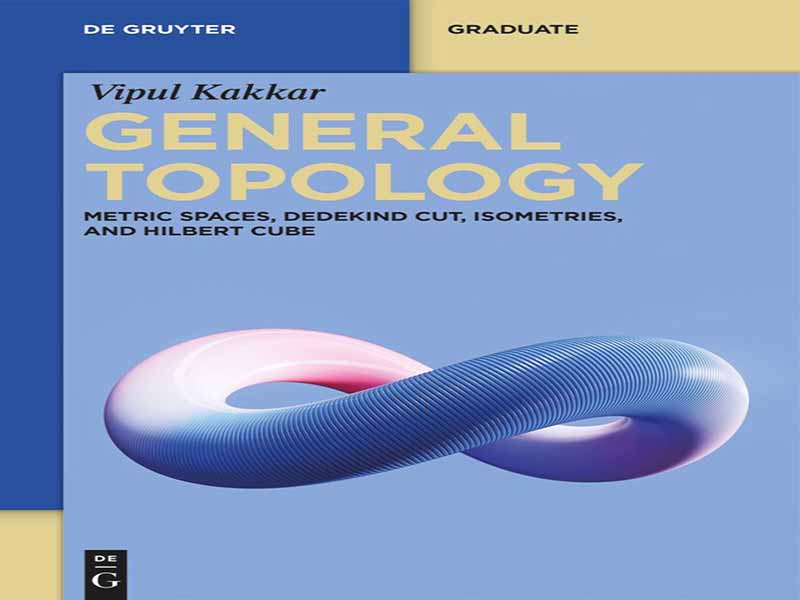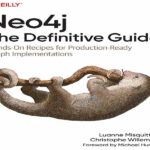- عنوان کتاب: General Topology
- نویسنده: Vipul Kakkar
- حوزه: توپولوژی
- سال انتشار: 2025
- تعداد صفحه: 246
- زبان اصلی: انگلیسی
- نوع فایل: pdf
- حجم فایل: 2.23 مگابایت
اگرچه توپولوژی به شیوه های مختلفی منشأ گرفته است، اما ایده خوبی است که ابتدا فضای متریک و سپس توپولوژی را یاد بگیرید. بنابراین کتاب حاضر به طور کامل به فضاهای متریک و توپولوژی آنها اختصاص دارد. این موضوع برای بسیاری از تخصص های ریاضی و سایر رشته ها ضروری است. احتمالاً یکی از دیدگاه خود به موضوع نگاه می کند. کتاب حاضر حاصل یادداشت های سخنرانی من است که برای تدریس توپولوژی در دانشگاه مرکزی راجستان هند تهیه شده است. این کتاب سعی دارد به سوالاتی که در طول تدریس در کلاس مطرح می شود، چه توسط من و چه توسط دانش آموزان پاسخ دهد. کتاب با یک سوال اساسی شروع می شود: “مجموعه چیست؟” چرا یک سیستم بدیهی مورد نیاز است. در فصل اول، سیستم بدیهی Zermelo-Freenkel مورد بحث قرار گرفته است. شرح کامل سیستم های اعداد مختلف در فصل اول مورد بحث قرار گرفته است. ساختارهای سیستم اعداد حقیقی با کمک برشهای ددکیند و دنبالههای کوشی به ترتیب در فصلهای 1 و 5 مورد بحث قرار گرفتهاند. فصل 2 با تعریف فضای متریک شروع می شود. در این فصل، مثالها و ویژگیهای مختلف فضاهای متریک و فضاهای هنجاری مورد بحث قرار میگیرد. همچنین، فواصل بین مجموعه ها در فضاهای متریک و فاصله گروموف- هاسدورف مورد بحث قرار می گیرد. فصل 3 به نقشه های بین فضاهای متریک اختصاص دارد. بخش اول نقشه های پیوسته و خواص آنها را مورد بحث قرار می دهد. بخش دوم همومورفیسم ها و خواص آنها را مورد بحث قرار می دهد. بخش سوم معیارهای معادل را مورد بحث قرار می دهد. مفاهیم معادل لیپشیتز و متریک های معادل توپولوژیکی مورد بحث قرار می گیرند. در بخش چهارم ایزومتریک بین فضاهای متریک مورد بحث قرار گرفته است. بخش پنجم فضاهای متریک محدود و جاسازی آنها در فضاهای اقلیدسی را مورد بحث قرار می دهد. در فصل 4، معیارهای مربوط به مجموعه محصول و ضریب مورد بحث قرار گرفته است. باز هم، نقشه های حفظ متریک در این تنظیمات مورد بحث قرار می گیرند. فصل 5 به دنباله ها در فضاهای متریک اختصاص دارد. بخش اول به دنباله های همگرا و خواص آنها می پردازد. بخش دوم فضاهای متریک کامل و خواص آنها را مورد بحث قرار می دهد. در بخش پنجم تکمیل فضای متریک مورد بحث قرار گرفته است. در بخش چهارم، سیستم اعداد حقیقی از طریق تکمیل گزاره ها به دست می آید که یک فضای متریک ناقص است. در بخش پنجم، قضیه مقوله بایر و کاربردهای آن مورد بحث قرار گرفته است. فصل 6 به فضاهای متریک فشرده اختصاص دارد. بخش اول به بررسی خواص آنها می پردازد. در بخش دوم، مقداری معادل سازی فشردگی مورد بحث قرار می گیرد. در بخش سوم مکعب هیلبرت مورد بحث قرار می گیرد و ثابت می شود که یک فضای متریک فشرده را می توان به عنوان یک مجموعه بسته در مکعب هیلبرت تعبیه کرد. بخش چهارم مجموعه کانتور را مورد بحث قرار می دهد و نشان داده می شود که یک فضای متریک فشرده تصویری پیوسته از مجموعه کانتور است. فصل آخر در مورد فضاهای متریک متصل است. خواص مختلف فضاهای متصل در بخش اول و دوم مورد بحث قرار گرفته است. بخش آخر فضاهای متریک متصل به مسیر را مورد بحث قرار می دهد. یک کتاب بدون کمک دیگران کامل نمی شود. ابتدا از معلمانم، پروفسور رامجی لال (بازنشسته) و پروفسور ر. همچنین از پروفسور D. P. Choudhary (بازنشسته)، دانشگاه الله آباد، Prayagraj، به خاطر اشاره به اشتباهات مختلف در این کتاب سپاسگزارم. با این حال، اگر خطایی باقی مانده باشد، تنها من مسئول آن هستم. اگر خوانندگانی بتوانند هر نوع اشتباهی در کتاب به من بدهند، سپاسگزار خواهم بود. من از تیم تحریریه De Gruyter، به ویژه دکتر Ranis N. Ibragimov بسیار سپاسگزارم. او در مراحل مختلف بسیار کمک کننده بود. من از پدر و مادرم، آقایان V. K. Khattri و خانم Gaytri Khattri، برای حمایت اخلاقی مداوم آنها سپاسگزارم. آخرین اما نه کماهمیت، همسرم وینی صمیمانه از شکیبایی، حمایت بیدریغ و تشویقش در سراسر زندگیام تشکر میکند.
Although the topology has originated in different manners, it is a good idea to learn metric space first and then topology. Therefore the present book is completely dedicated to metric spaces and their topology. This subject is a necessity for many mathematical specialties and other fields. One is likely to approach the topic from their own perspective. The present book is an outcome of my lecture notes, which were prepared to teach topology at the Central University of Rajasthan, India. This book tries to answer the questions asked during the classroom teaching, either by me or by the students. The book starts with a basic fundamental question: “What is a set?” Why an axiomatic system is required. In the first chapter, the Zermelo–Freenkel axiomatic system is discussed. The complete description of the various number systems has been discussed in the first chapter. The constructions of the real number system with the help of Dedekind cuts and Cauchy sequences are discussed in the Chapters 1 and 5, respectively. Chapter 2 starts with the definition of a metric space. In this chapter, various examples and properties of the metric spaces and normed spaces are discussed. Also, the distances between the sets in metric spaces and the Gromov–Hausdorff distance are discussed. Chapter 3 is devoted to maps between metric spaces. The first section discusses continuous maps and their properties. The second section discusses homeomorphisms and their properties. The third section discusses equivalent metrics. The notions of Lipschitz equivalent and topological equivalent metrics are discussed. In the fourth section the isometry between metric spaces is discussed. The fifth section discusses the finite metric spaces and their embedding in Euclidean spaces. In Chapter 4, metrics on the product and quotient sets are discussed. Again, the metric-preserving maps are discussed in this setting. Chapter 5 is devoted to sequences in metric spaces. The first section deals with convergent sequences and their properties. The second section discusses complete metric spaces and their properties. In the fifth section the completion of a metric space is discussed. In the fourth section the real number system is obtained via the completion of the rationals, which is an incomplete metric space. In the fifth section, the Baire category theorem and its applications are discussed. Chapter 6 is devoted to compact metric spaces. The first section discusses their properties. In the second section, some equivalence of compactness is discussed. In the third section the Hilbert cube is discussed, and it is proved that a compact metric space can be embedded in the Hilbert cube as a closed set. The fourth section discusses the Cantor set, and it is shown that a compact metric space is a continuous image of the Cantor set. The last chapter is about connected metric spaces. Various properties of connected spaces are discussed in the first and second sections. The last section discusses the pathconnected metric spaces. A book cannot be completed without the help of others. First of all, I am thankful to my teachers, Prof. Ramji Lal (retired) and Prof. R. P. Shukla, University of Allahabad, Prayagraj, for their constant encouragement. I am also grateful to Prof. D. P. Choudhary (retired), University of Allahabad, Prayagraj, for pointing out various errors in this book. However, if there are any errors left, I am the only one responsible for them. I will be thankful to the readers if they can let me know any kind of errors in the book. I am very thankful to the editorial team of De Gruyter, especially Dr. Ranis N. Ibragimov. He was very helpful at various stages. I am thankful to my parents, Mr. V. K. Khattri and Mrs. Gaytri Khattri, for their constant moral support. Last but not least, my wife Vinny has my sincere gratitude for her patience, unwavering support, and encouragement all across my life.
این کتاب را میتوانید از لینک زیر بصورت رایگان دانلود کنید:
Download: General Topology





































نظرات کاربران